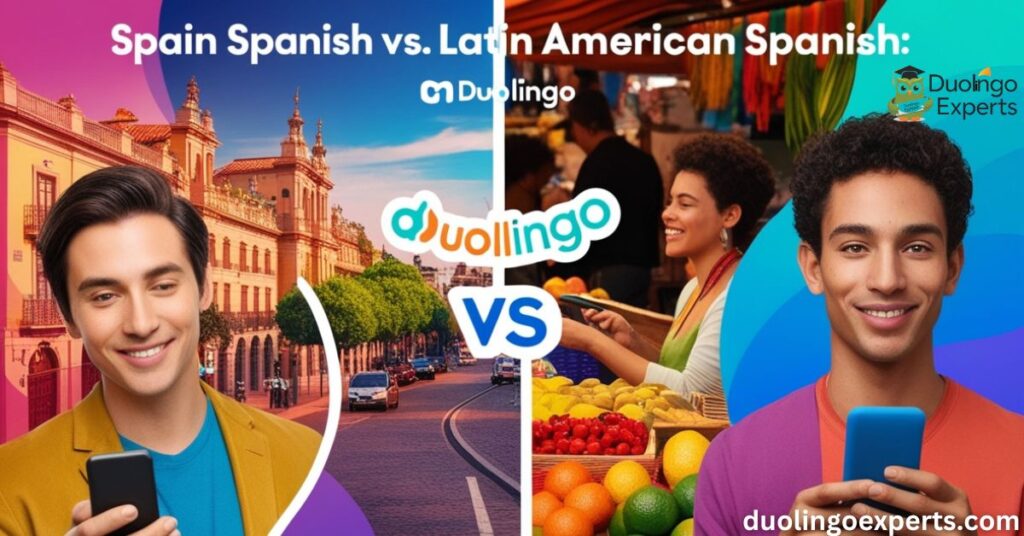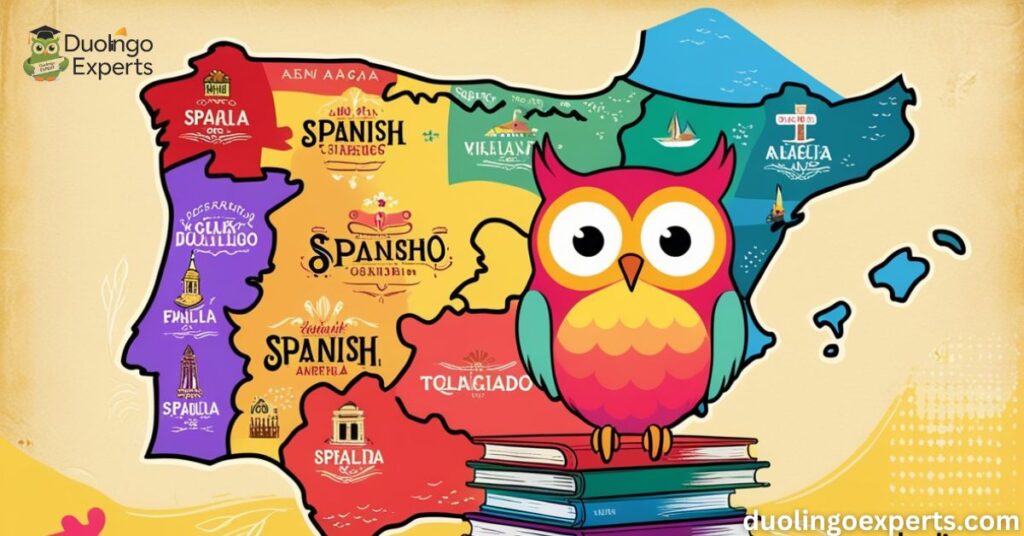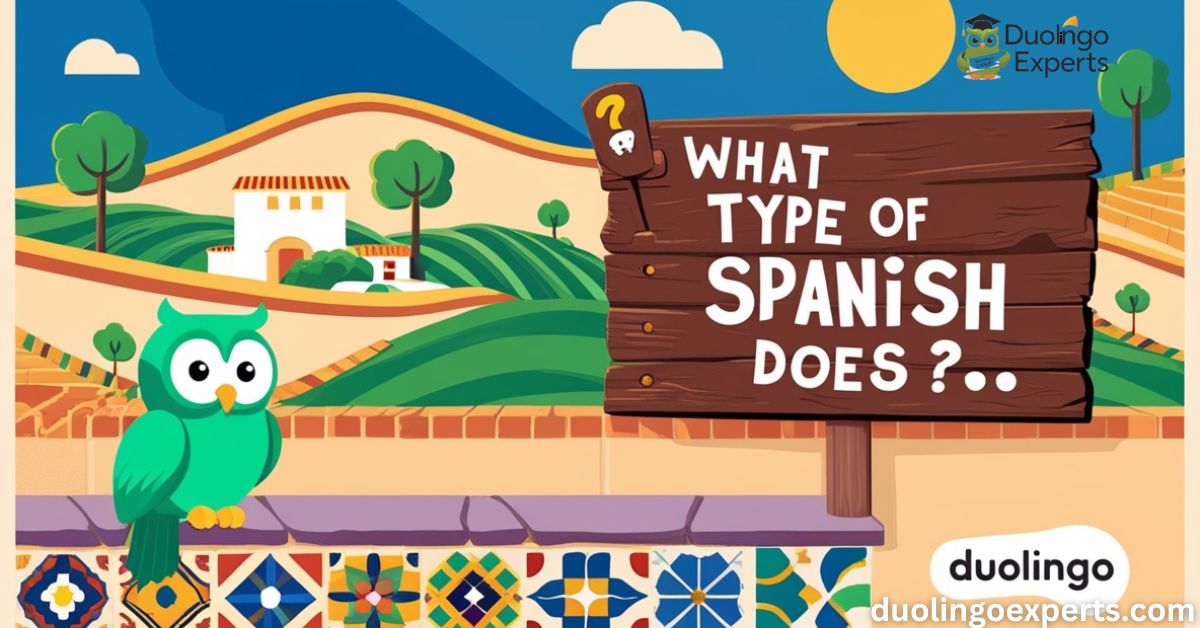In today’s interconnected world, learning a new language has never been more accessible. Among the most widely studied languages is Spanish, spoken by over 460 million people worldwide. Whether you are learning What Type Of Spanish Does for travel, business, or cultural exploration, platforms like Duolingo offer a convenient, gamified approach to mastering the language. However, a common question many learners ask is: What Type Of Spanish Does Duolingo teach — does it focus on Spain Spanish, or does it emphasize Latin American Spanish?
This question holds significance for learners who aim to speak with native Spaniards or travel to Spain, where the language has distinct regional features. In this comprehensive article, we’ll answer this question in detail, explore the variations of Spanish dialects across the world, examine the differences between Castilian Spanish (the version spoken in Spain) and Latin American Spanish, and dive deep into how Duolingo addresses these variations in its Spanish language course.
The Spanish Dialect Taught on Duolingo
What Dialect Does Duolingo Teach?
When you open Duolingo’s app or website to start learning Spanish, you’ll quickly notice that the course is designed with a broad audience in mind. Duolingo’s Spanish language course is accessible to anyone, regardless of their learning goals. The main dialect taught by Duolingo is Latin American Spanish, the version of the language spoken by millions of people across Mexico, Central America, and South America.
For instance, Duolingo features content that reflects the most common expressions and vocabulary used in Mexico, Colombia, and Argentina, among others. If you’re learning Spanish for travelers heading to Latin America, Duolingo is an excellent starting point. However, for learners interested in Castilian Spanish or the Spanish spoken in Spain, Duolingo may not be as comprehensive or tailored to those needs.
Spain Spanish (Castilian Spanish) vs. Latin American Spanish

Understanding the Difference
Before diving into the details of what Duolingo teaches, it’s essential to understand the key differences between Castilian Spanish and Latin American Spanish. While both dialects are mutually intelligible, there are subtle differences in pronunciation, vocabulary, grammar, and even cultural context that set them apart. Here’s a breakdown:
Pronunciation
The most noticeable difference between Castilian Spanish and Latin American Spanish lies in the pronunciation:
- The “Th” sound in Castilian Spanish:
- In Spain, specifically Castilian Spanish, words like cielo (sky) and zapato (shoe) are pronounced with the “th” sound. This theta sound is a characteristic feature of Spain’s accent.
- Latin American Spanish pronunciation:
- In Latin American Spanish, this “th” sound is typically replaced with an “s” sound. So, cielo would be pronounced as sielo in Mexico or Argentina.
- Seseo vs. Ceceo:
- Seseo refers to the pronunciation of both “s” and “z” sounds as “s” (common in most of Latin America). Ceceo is unique to parts of Spain, where the “z” and “c” sounds are pronounced with a “th” sound. This difference impacts how words are understood and spoken.
Vocabulary Differences
Spanish vocabulary varies significantly between regions. While both Castilian Spanish and Latin American Spanish share many common words, they also feature unique terms and slang. Some examples include:
- Car:
- Castilian Spanish: Coche
- Latin American Spanish: Carro
- Computer:
- Castilian Spanish: Ordenador
- Latin American Spanish: Computadora
- Cell Phone:
- Castilian Spanish: Móvil
- Latin American Spanish: Celular
Grammar Differences
In addition to pronunciation and vocabulary, there are some important grammar differences that learners should know:
- Vosotros vs. Ustedes:
- In Spain, the plural “you” is divided into two forms: vosotros (informal) and ustedes (formal). For example, ¿Cómo estáis? (How are you all?). In Latin America, ustedes is used for both formal and informal situations.
- Use of Vos:
- In Argentina and parts of Uruguay, Chile, and Paraguay, the informal “you” (tú) is replaced with vos, and conjugations are modified accordingly. For example, ¿Cómo estás vos? (How are you?) instead of ¿Cómo estás tú?
Regional Slang and Colloquialisms
Both Castilian Spanish and Latin American Spanish are rich in regional slang and colloquialisms that change from country to country. Some expressions used in Spain may be unfamiliar or even confusing to Latin American speakers, and vice versa. For instance:
- Güey (Mexico) means “dude” or “bro.”
- Boludo (Argentina) is an informal way of saying “dude” or “idiot,” but it’s used in a much more friendly context in Argentina than the term might be in other regions.
- Peli (Argentina) refers to a movie, whereas película is the formal term across the Spanish-speaking world.
Duolingo’s Approach to Spanish Dialects

Does Duolingo Teach Castilian Spanish?
Duolingo primarily focuses on Latin American Spanish, but it does occasionally include phrases and expressions that are commonly used in Spain. However, Duolingo does not have a separate course for Castilian Spanish, which would allow learners to specifically focus on the language spoken in Spain.
Instead, learners will encounter vocabulary and Spanish pronunciation that is heavily influenced by Latin American Spanish, especially the Mexican Spanish dialect. For example, Duolingo often uses carro instead of coche, and the more neutral ustedes is used instead of vosotros for the plural “you.”
Audio and Pronunciation: Castilian vs. Latin American Spanish
One of the most important aspects of learning a language is hearing it spoken correctly. Duolingo’s language courses are built around interactive lessons that emphasize listening comprehension and correct pronunciation. Most of the voice recordings used in Duolingo’s Spanish lessons come from native speakers who are primarily from Latin American countries, particularly Mexico and Colombia.
For learners aiming to speak with a Castilian Spanish accent, this could pose a challenge, as the pronunciation of certain letters (like the “th” sound) will not be taught in Duolingo’s course. This can create a gap for learners who want to sound like native Spaniards.
Key Spanish Variations You’ll Encounter on Duolingo
While Duolingo offers Latin American Spanish, some lessons may incorporate vocabulary and phrases that reflect regional differences. These variations come from Mexican, Colombian, and Argentine Spanish, which dominate much of the course content.
Mexican Spanish Vocabulary
Mexican Spanish is one of the most widely used Spanish dialects in Duolingo, and you’ll frequently encounter Mexican terms like:
- Chido (cool)
- Güey (dude, friend)
- Banda (group of friends)
- Cuate (friend, buddy)
These terms are used regularly in Duolingo’s lessons and are excellent if you’re planning to travel or engage with Mexican Spanish speakers.
Colombian Spanish Features
Colombian Spanish, particularly from the Bogotá region, is known for its melodic and clear pronunciation. Duolingo also incorporates some Colombian features:
- Usted is used more informally in Colombia than in other Latin American regions, even when talking to friends or family.
- The melodic rhythm of Colombian speech is reflected in the softer intonation used in Duolingo’s lessons.
Argentine Spanish Pronunciation
Argentine Spanish, especially from the Buenos Aires region, features its own distinct pronunciation:
- The use of vos (instead of tú) for informal “you.”
- The distinctive sh sound for “ll” and “y” sounds, which would be pronounced as “y” or “j” in other dialects. For example, yo (I) in Argentina is pronounced “sho”.
Preparing for Spain with Duolingo

If your primary goal is to learn Castilian Spanish or communicate effectively in Spain, Duolingo can still be a valuable resource. However, it’s essential to supplement your learning with additional tools that focus specifically on Spain Spanish. Here’s how to maximize Duolingo’s utility:
1. Learn the Basic Vocabulary
Duolingo introduces you to core Spanish vocabulary that’s useful in most contexts. However, for Spain-specific words, here are a few to focus on:
- Coche (car)
- Móvil (cell phone)
- Ordenador (computer)
2. Focus on Pronunciation Practice
While Duolingo doesn’t focus on Castilian Spanish pronunciation, you can supplement this by listening to native Spanish speakers on platforms like YouTube or Spanish podcasts. These resources will help you familiarize yourself with the distinctive th sound used in Spain.
3. Use Additional Resources for Spain Spanish
To bridge the gap in Castilian Spanish exposure, try the following:
- Podcasts: Look for Spanish-language podcasts produced in Spain.
- TV Shows and Movies: Shows like La Casa de Papel (Money Heist) can expose you to the Spanish accent.
- Online Communities: Engage with native Spaniards through language exchange apps or conversation meetups to practice real-world Castilian Spanish.
Advantages and Limitations of Learning Spanish with Duolingo
Advantages of Learning Spanish with Duolingo
- Gamified Learning: Duolingo’s interactive lessons make learning fun and engaging.
- Flexibility: You can learn Spanish online anywhere, at your own pace.
- Free Access: The core Duolingo lessons are free, making them accessible to learners of all levels.
Limitations of Duolingo for Spain Spanish Learners
- Focus on Latin American Spanish: Duolingo does not offer a Castilian Spanish course, which can be limiting for learners focused on Spain.
- Limited Grammar Coverage: Duolingo’s lessons often focus on practical, everyday phrases rather than formal grammar explanations.
- Lack of Immersion: While Duolingo offers basic interaction, it doesn’t provide the immersive experience necessary for mastering complex grammar or accents.
Frequently Asked Questions
Does Duolingo teach Spain Spanish or Mexican Spanish?
Duolingo primarily teaches Latin American Spanish, with a strong emphasis on Mexican Spanish vocabulary and pronunciation. It doesn’t offer a separate course for Castilian Spanish (Spain Spanish), so learners focusing on Spain Spanish may need additional resources.
Is Spain Spanish and Mexican Spanish the same?
No, Spain Spanish (Castilian) and Mexican Spanish are not the same. While they are mutually intelligible, they differ in pronunciation, vocabulary, and grammar, such as the use of “vosotros” in Spain versus “ustedes” in Mexico.
How to learn Spanish from Spain?
To learn Spanish from Spain, focus on resources that emphasize Castilian Spanish, such as Spain-based podcasts, TV shows like La Casa de Papel, and language exchanges with native Spaniards. Additionally, consider using textbooks or apps specifically tailored to Spain Spanish.
Should I learn Spain Spanish or Latin American Spanish?
It depends on your goals—if you plan to travel or communicate with people in Spain, focus on Spain Spanish (Castilian). However, Latin American Spanish is more widely spoken across the world, making it a practical choice for global communication.
What is the hardest Spanish to learn?
The hardest Spanish to learn often depends on the learner’s background, but Castilian Spanish can be challenging due to its distinct pronunciation, including the “th” sound. Additionally, Argentine Spanish with its “voseo” and unique pronunciation can be tricky for learners.
Which country speaks the most correct Spanish?
Many consider Spain to speak the most “correct” Spanish, particularly Castilian Spanish, as it’s the origin of the language. However, Spanish is spoken correctly in various countries, and regional accents and expressions vary, making all forms of Spanish valid.
Is Spain Spanish hard to learn?
Spain Spanish can be challenging due to its unique pronunciation (like the “th” sound) and use of vosotros for informal plural “you.” However, it shares many similarities with other Spanish dialects, making it manageable with practice and exposure.
Which Spanish is easiest to learn?
Mexican Spanish is often considered the easiest to learn due to its clear pronunciation and widespread use. It also uses more neutral vocabulary, making it accessible to learners across different regions.
Conclusion: Is Duolingo Right for Learning Spain Spanish?
In summary, Duolingo is an excellent tool for learning Latin American Spanish, particularly if you’re interested in Mexican Spanish, Colombian Spanish, or other regional variations. However, Duolingo’s focus on Latin American dialects means that learners interested in Spain Spanish (Castilian Spanish) will need to seek additional resources to fully grasp the language’s nuances.
To prepare for Spain, learners can use Duolingo as a foundation but should supplement their learning with other tools like Spanish TV shows, Podcasts, and language exchange platforms to master the distinctive features of Castilian Spanish.
No matter where you plan to use your Spanish skills, Duolingo offers a solid starting point, especially when combined with other learning resources tailored to your goals.
>>>Read Also: Does Duolingo Have ASL? Everything You Need to Know

DuolingoExperts, managed by MarkJohan, offers expert insights and tips for mastering languages. A tech-driven platform to enhance your learning experience.

